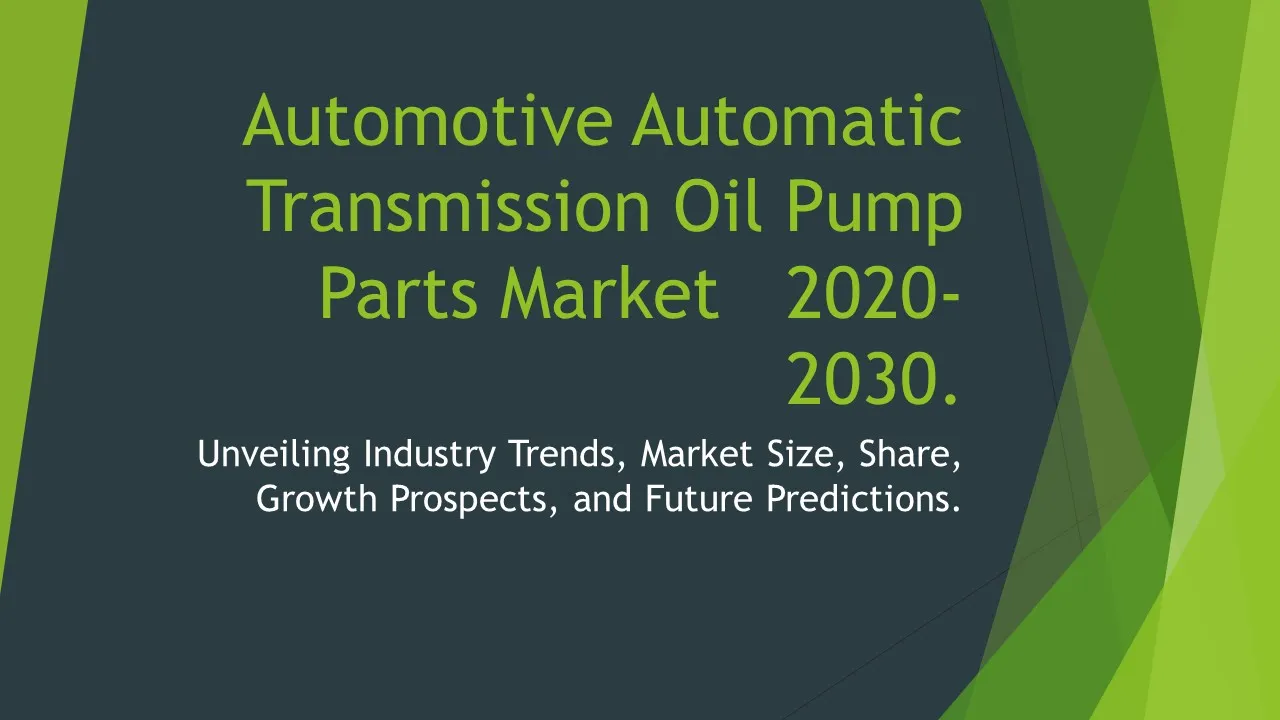PEMFC and Fuel Cell Electric Vehicle Sales
PEMFC and Fuel Cell Electric Vehicle Sales Market Segments - by Product Type (Proton Exchange Membrane Fuel Cell, Direct Methanol Fuel Cell), Application (Transportation, Portable Power, Stationary Power), Distribution Channel (OEMs, Aftermarket), Region (North America, Europe, Asia Pacific, Latin America, Middle East & Africa) - Global Industry Analysis, Growth, Share, Size, Trends, and Forecast 2025-2035
- Report Preview
- Table Of Content
- Segments
- Methodology
PEMFC and Fuel Cell Electric Vehicle Sales Market Outlook
The global market for Proton Exchange Membrane Fuel Cells (PEMFC) and Fuel Cell Electric Vehicles (FCEVs) is projected to reach approximately USD 25 billion by 2035, with a compound annual growth rate (CAGR) of around 14.5% during the forecast period of 2025 to 2035. This growth is primarily driven by the increasing demand for sustainable and zero-emission transportation solutions, coupled with advancements in fuel cell technology that enhance performance and reduce costs. Furthermore, government initiatives promoting clean energy and reducing carbon emissions are significantly boosting investment in hydrogen infrastructure and fuel cell technologies. The rising awareness of the need for renewable energy sources and the escalating price of fossil fuels are also contributing to the expansion of the PEMFC and FCEV market. Additionally, the growing automotive sector's shift towards electrification and sustainability plays a pivotal role in propelling market growth.
Growth Factor of the Market
The growth of the PEMFC and Fuel Cell Electric Vehicle market can be attributed to several key factors. Firstly, substantial investments in research and development from both public and private sectors are leading to significant technological advancements in fuel cell technology, which improve efficiency and reliability. Secondly, the rising emphasis on reducing greenhouse gas emissions and promoting clean transportation has resulted in government incentives and subsidies for hydrogen fuel cell vehicles, encouraging manufacturers to invest in this space. Thirdly, increasing consumer awareness about environmental issues is driving demand for greener alternatives to traditional vehicles. Moreover, the expanding hydrogen infrastructure, including production, storage, and distribution facilities, is facilitating the adoption of fuel cell vehicles. Lastly, partnerships and collaborations among industry stakeholders are paving the way for innovative solutions that enhance the market's growth potential.
Key Highlights of the Market
- Projected market size of USD 25 billion by 2035, growing at a CAGR of 14.5%.
- Strong governmental support and incentives for clean energy technologies.
- Technological advancements leading to improved fuel cell efficiency.
- Growing awareness among consumers regarding sustainable transportation.
- Expansion of hydrogen infrastructure supporting fuel cell vehicle adoption.
By Product Type
Proton Exchange Membrane Fuel Cell:
Proton Exchange Membrane Fuel Cells (PEMFCs) are pivotal in the drive towards sustainable transportation. They operate at relatively low temperatures, making them suitable for a range of applications, particularly in vehicles. PEMFCs convert hydrogen into electricity, producing only water as a byproduct, thus aligning perfectly with global emissions reduction targets. Their high power density, quick start-up times, and ability to function effectively in various operating conditions further bolster their appeal. As automobile manufacturers increasingly pivot towards hydrogen fuel cell technology, the demand for PEMFCs in the automotive sector is expected to surge significantly. The transition towards clean energy sources is likely to result in higher adoption rates of PEMFCs, positioning them as a leading product type in the fuel cell market.
Direct Methanol Fuel Cell:
Direct Methanol Fuel Cells (DMFCs) are another significant segment within the fuel cell market. Unlike PEMFCs, DMFCs utilize methanol directly as fuel, which can be easier to handle and transport compared to hydrogen. This advantage positions DMFCs for applications in portable power generation and small-scale energy systems. Their ability to operate at room temperature and their relatively simple fuel supply make them attractive for consumer electronics, backup power systems, and small vehicles. As innovations in DMFC technologies continue and the push for versatile energy solutions grows, these fuel cells will likely capture a larger share of the market, particularly in niche applications where portability and ease of use are paramount.
By Application
Transportation:
The transportation segment represents a significant application area for PEMFCs and FCEVs. The automotive industry is witnessing a transformative shift with many manufacturers exploring hydrogen as a clean fuel alternative to conventional gasoline and diesel engines. Fuel cell vehicles (FCVs) offer advantages such as longer driving ranges and quicker refueling times compared to battery electric vehicles (BEVs). This makes them highly attractive for consumers and logistics companies looking for sustainable solutions that do not compromise on performance. The rising support from governments in the form of incentives and infrastructure development further accelerates the adoption of fuel cell technology in the transportation sector, making it a crucial driver of market growth.
Portable Power:
Portable power applications are rapidly gaining traction as the demand for energy-efficient solutions grows. Direct Methanol Fuel Cells (DMFCs) are particularly well-suited for portable power applications due to their lightweight and compact design. They can provide reliable power for a variety of electronic devices, including laptops, mobile phones, and military equipment. As the trend towards portable and eco-friendly energy solutions continues to rise, DMFCs are expected to see increased adoption in this segment. Their ease of use and ability to operate in diverse environmental conditions make them an attractive choice for consumers and industries alike, thereby reinforcing their importance in the fuel cell market.
Stationary Power:
Stationary power applications of PEMFCs provide a sustainable energy solution for residential, commercial, and industrial settings. These systems can offer uninterrupted power supply and can be integrated into existing energy infrastructures. The ability to generate power on-site reduces transmission losses and enhances energy security, appealing to both end-users and businesses. Moreover, as the shift towards renewable energy sources intensifies, the need for reliable backup systems becomes critical, making PEMFCs a viable option. The growing demand for clean and efficient energy solutions among businesses and consumers is anticipated to drive the adoption of stationary fuel cell systems significantly.
By Distribution Channel
OEMs:
Original Equipment Manufacturers (OEMs) play a vital role in the distribution of fuel cell technologies. They are responsible for the integration of fuel cell systems into vehicles and other applications, signifying their importance in the overall supply chain. With major automotive manufacturers increasingly investing in hydrogen fuel cell technology, the OEM distribution channel is expected to expand significantly. Partnerships between OEMs and fuel cell developers are also becoming more common, facilitating the swift deployment of hydrogen infrastructure and fuel cell vehicles. The focus on developing robust supply chains and innovative technologies will be key in catering to the rising demand for fuel cells across various sectors.
Aftermarket:
The aftermarket distribution channel encompasses the sale of fuel cell components, service parts, and maintenance services. As the market for fuel cells grows, the aftermarket is poised to become a significant contributor to industry revenues. This segment offers opportunities for companies to provide support through maintenance and repair services, ensuring that fuel cell systems operate at peak performance. As more fuel cell vehicles and systems enter the market, the need for aftermarket solutions will increase, driving companies to develop comprehensive support services. This aspect of the market is crucial for customer satisfaction and loyalty, promoting sustained growth in the fuel cell industry.
By Region
The North American region is at the forefront of the PEMFC and FCEV market, driven by considerable investments from both government and private sectors in hydrogen and fuel cell technologies. The U.S. Department of Energy has been actively promoting fuel cell technology through various initiatives, resulting in a robust ecosystem for fuel cell development. As a result, the North American market is expected to maintain a significant share, with a projected CAGR of 15% from 2025 to 2035. The presence of major automotive manufacturers in the region further accelerates the adoption of fuel cell technology, resulting in favorable market conditions for growth.
In Europe, the PEMFC and FCEV market is also witnessing substantial growth, supported by stringent emissions regulations and a strong commitment to sustainability. Countries like Germany, France, and the United Kingdom are leading the charge in promoting hydrogen as a viable alternative to fossil fuels. The European Union has set ambitious targets for reducing greenhouse gas emissions, spurring investment in fuel cell infrastructure and technology. As a result, the European market is expected to capture a significant portion of the global market share, reinforcing the region's role in advancing fuel cell technology and its applications.
Opportunities
The PEMFC and fuel cell electric vehicle market presents numerous opportunities for stakeholders aiming to capitalize on the growing demand for sustainable energy solutions. One of the most significant opportunities lies in the development of hydrogen infrastructure, including production, storage, and distribution systems. As governments around the world prioritize the establishment of hydrogen fuel networks, businesses that can provide innovative solutions for hydrogen production and distribution stand to benefit greatly. Furthermore, advancements in fuel cell technology pave the way for new applications beyond transportation, such as stationary power and portable devices. This diversification into various sectors allows companies to broaden their market presence and generate additional revenue streams, thus enhancing their competitive advantage.
Another opportunity arises from increasing collaborations and partnerships among industry players. Strategic alliances between automotive manufacturers, technology developers, and energy providers can expedite the research and development of new fuel cell technologies and applications. These collaborations can lead to innovative solutions that address the unique challenges of fuel cells, such as cost reduction, performance enhancement, and scalability. Additionally, as public awareness of environmental issues continues to rise, consumer demand for eco-friendly vehicles will create a conducive environment for the adoption of fuel cell technology. Companies that proactively engage in marketing and educational campaigns to highlight the benefits of fuel cells will likely gain a strong foothold in this expanding market.
Threats
Despite the promising outlook for the PEMFC and fuel cell electric vehicle market, several threats could hinder its growth. One major threat stems from the competition posed by battery electric vehicles (BEVs), which have gained significant traction in the automotive market. As BEV technology continues to advance, offering longer ranges and faster charging times, consumer preference may trend towards these alternatives, potentially limiting the market share for fuel cell vehicles. Additionally, the high costs associated with fuel cell systems and the infrastructure required for hydrogen production and distribution pose significant challenges. Unless manufacturers can reduce costs and enhance the economic viability of fuel cells, widespread adoption may be hindered. Furthermore, regulatory hurdles and varying governmental policies across regions could complicate the operational landscape for fuel cell companies, leading to inconsistencies in market growth.
In addition to competition and costs, the limited availability of hydrogen fueling stations presents another significant restraining factor for the PEMFC and FCEV market. The current infrastructure for hydrogen fueling is not as developed as that for traditional gasoline and electric charging stations, which can deter potential consumers from adopting fuel cell vehicles. This lack of infrastructure also poses challenges for manufacturers looking to scale their offerings and reach broader consumer bases. Furthermore, public perception regarding the safety of hydrogen as a fuel source, stemming from historical incidents, can result in reluctance among consumers to embrace fuel cell technology. Addressing these concerns through education and demonstrating the safety and efficiency of hydrogen fuel is crucial for overcoming this barrier.
Competitor Outlook
- Toyota Motor Corporation
- Honda Motor Co., Ltd.
- Ballard Power Systems Inc.
- Plug Power Inc.
- Hyundai Motor Company
- Bloom Energy Corporation
- FuelCell Energy Inc.
- General Motors Company
- Mercedes-Benz AG
- Nissan Motor Corporation
- PowerCell Sweden AB
- ITM Power plc
- Hydrogenics Corporation
- WattFuelCell
- Doosan Fuel Cell Co., Ltd.
The competitive landscape of the PEMFC and fuel cell electric vehicle market is characterized by a blend of established automotive giants and innovative technology companies. Leading manufacturers such as Toyota and Honda are at the forefront, continuously investing in research and development to enhance fuel cell efficiency and reduce costs. Toyota, for instance, has made significant strides with its Mirai model, which showcases the potential of hydrogen fuel cell technology in commercial vehicles. Similarly, Honda is actively working on expanding its fuel cell offerings and has developed partnerships to foster hydrogen infrastructure growth. Other players like Ballard Power Systems and Plug Power are focusing on providing fuel cell components and systems that serve a range of applications, from automotive to industrial uses. The competition is intensifying as new entrants seek to carve out their niche in this rapidly evolving market.
As the market expands, companies are increasingly adopting collaborative approaches to foster innovation and accelerate growth. Partnerships between automotive manufacturers and clean energy firms are becoming more common, facilitating advancements in hydrogen production, storage, and distribution. For example, Hyundai has been proactive in developing hydrogen infrastructure alongside its fuel cell vehicles, showcasing a comprehensive approach to market penetration. Additionally, technological advancements are driving competition, with companies like Bloom Energy focusing on creating efficient solutions for hydrogen production. As the demand for renewable energy sources continues to rise, the competitive dynamics within the PEMFC and fuel cell electric vehicle market will likely evolve, leading to further innovations and improved offerings.
1 Appendix
- 1.1 List of Tables
- 1.2 List of Figures
2 Introduction
- 2.1 Market Definition
- 2.2 Scope of the Report
- 2.3 Study Assumptions
- 2.4 Base Currency & Forecast Periods
3 Market Dynamics
- 3.1 Market Growth Factors
- 3.2 Economic & Global Events
- 3.3 Innovation Trends
- 3.4 Supply Chain Analysis
4 Consumer Behavior
- 4.1 Market Trends
- 4.2 Pricing Analysis
- 4.3 Buyer Insights
5 Key Player Profiles
- 5.1 WattFuelCell
- 5.1.1 Business Overview
- 5.1.2 Products & Services
- 5.1.3 Financials
- 5.1.4 Recent Developments
- 5.1.5 SWOT Analysis
- 5.2 ITM Power plc
- 5.2.1 Business Overview
- 5.2.2 Products & Services
- 5.2.3 Financials
- 5.2.4 Recent Developments
- 5.2.5 SWOT Analysis
- 5.3 Plug Power Inc.
- 5.3.1 Business Overview
- 5.3.2 Products & Services
- 5.3.3 Financials
- 5.3.4 Recent Developments
- 5.3.5 SWOT Analysis
- 5.4 Mercedes-Benz AG
- 5.4.1 Business Overview
- 5.4.2 Products & Services
- 5.4.3 Financials
- 5.4.4 Recent Developments
- 5.4.5 SWOT Analysis
- 5.5 PowerCell Sweden AB
- 5.5.1 Business Overview
- 5.5.2 Products & Services
- 5.5.3 Financials
- 5.5.4 Recent Developments
- 5.5.5 SWOT Analysis
- 5.6 FuelCell Energy Inc.
- 5.6.1 Business Overview
- 5.6.2 Products & Services
- 5.6.3 Financials
- 5.6.4 Recent Developments
- 5.6.5 SWOT Analysis
- 5.7 Honda Motor Co., Ltd.
- 5.7.1 Business Overview
- 5.7.2 Products & Services
- 5.7.3 Financials
- 5.7.4 Recent Developments
- 5.7.5 SWOT Analysis
- 5.8 Hyundai Motor Company
- 5.8.1 Business Overview
- 5.8.2 Products & Services
- 5.8.3 Financials
- 5.8.4 Recent Developments
- 5.8.5 SWOT Analysis
- 5.9 General Motors Company
- 5.9.1 Business Overview
- 5.9.2 Products & Services
- 5.9.3 Financials
- 5.9.4 Recent Developments
- 5.9.5 SWOT Analysis
- 5.10 Hydrogenics Corporation
- 5.10.1 Business Overview
- 5.10.2 Products & Services
- 5.10.3 Financials
- 5.10.4 Recent Developments
- 5.10.5 SWOT Analysis
- 5.11 Bloom Energy Corporation
- 5.11.1 Business Overview
- 5.11.2 Products & Services
- 5.11.3 Financials
- 5.11.4 Recent Developments
- 5.11.5 SWOT Analysis
- 5.12 Nissan Motor Corporation
- 5.12.1 Business Overview
- 5.12.2 Products & Services
- 5.12.3 Financials
- 5.12.4 Recent Developments
- 5.12.5 SWOT Analysis
- 5.13 Toyota Motor Corporation
- 5.13.1 Business Overview
- 5.13.2 Products & Services
- 5.13.3 Financials
- 5.13.4 Recent Developments
- 5.13.5 SWOT Analysis
- 5.14 Ballard Power Systems Inc.
- 5.14.1 Business Overview
- 5.14.2 Products & Services
- 5.14.3 Financials
- 5.14.4 Recent Developments
- 5.14.5 SWOT Analysis
- 5.15 Doosan Fuel Cell Co., Ltd.
- 5.15.1 Business Overview
- 5.15.2 Products & Services
- 5.15.3 Financials
- 5.15.4 Recent Developments
- 5.15.5 SWOT Analysis
- 5.1 WattFuelCell
6 Market Segmentation
- 6.1 PEMFC and Fuel Cell Electric Vehicle Sales Market, By Application
- 6.1.1 Transportation
- 6.1.2 Portable Power
- 6.1.3 Stationary Power
- 6.2 PEMFC and Fuel Cell Electric Vehicle Sales Market, By Product Type
- 6.2.1 Proton Exchange Membrane Fuel Cell
- 6.2.2 Direct Methanol Fuel Cell
- 6.1 PEMFC and Fuel Cell Electric Vehicle Sales Market, By Application
7 Competitive Analysis
- 7.1 Key Player Comparison
- 7.2 Market Share Analysis
- 7.3 Investment Trends
- 7.4 SWOT Analysis
8 Research Methodology
- 8.1 Analysis Design
- 8.2 Research Phases
- 8.3 Study Timeline
9 Future Market Outlook
- 9.1 Growth Forecast
- 9.2 Market Evolution
10 Geographical Overview
- 10.1 Europe - Market Analysis
- 10.1.1 By Country
- 10.1.1.1 UK
- 10.1.1.2 France
- 10.1.1.3 Germany
- 10.1.1.4 Spain
- 10.1.1.5 Italy
- 10.1.1 By Country
- 10.2 Asia Pacific - Market Analysis
- 10.2.1 By Country
- 10.2.1.1 India
- 10.2.1.2 China
- 10.2.1.3 Japan
- 10.2.1.4 South Korea
- 10.2.1 By Country
- 10.3 Latin America - Market Analysis
- 10.3.1 By Country
- 10.3.1.1 Brazil
- 10.3.1.2 Argentina
- 10.3.1.3 Mexico
- 10.3.1 By Country
- 10.4 North America - Market Analysis
- 10.4.1 By Country
- 10.4.1.1 USA
- 10.4.1.2 Canada
- 10.4.1 By Country
- 10.5 Middle East & Africa - Market Analysis
- 10.5.1 By Country
- 10.5.1.1 Middle East
- 10.5.1.2 Africa
- 10.5.1 By Country
- 10.6 PEMFC and Fuel Cell Electric Vehicle Sales Market by Region
- 10.1 Europe - Market Analysis
11 Global Economic Factors
- 11.1 Inflation Impact
- 11.2 Trade Policies
12 Technology & Innovation
- 12.1 Emerging Technologies
- 12.2 AI & Digital Trends
- 12.3 Patent Research
13 Investment & Market Growth
- 13.1 Funding Trends
- 13.2 Future Market Projections
14 Market Overview & Key Insights
- 14.1 Executive Summary
- 14.2 Key Trends
- 14.3 Market Challenges
- 14.4 Regulatory Landscape
Segments Analyzed in the Report
The global PEMFC and Fuel Cell Electric Vehicle Sales market is categorized based on
By Product Type
- Proton Exchange Membrane Fuel Cell
- Direct Methanol Fuel Cell
By Application
- Transportation
- Portable Power
- Stationary Power
By Region
- North America
- Europe
- Asia Pacific
- Latin America
- Middle East & Africa
Key Players
- Toyota Motor Corporation
- Honda Motor Co., Ltd.
- Ballard Power Systems Inc.
- Plug Power Inc.
- Hyundai Motor Company
- Bloom Energy Corporation
- FuelCell Energy Inc.
- General Motors Company
- Mercedes-Benz AG
- Nissan Motor Corporation
- PowerCell Sweden AB
- ITM Power plc
- Hydrogenics Corporation
- WattFuelCell
- Doosan Fuel Cell Co., Ltd.
- Publish Date : Jan 20 ,2025
- Report ID : AU-4085
- No. Of Pages : 100
- Format : |
- Ratings : 4.5 (110 Reviews)









